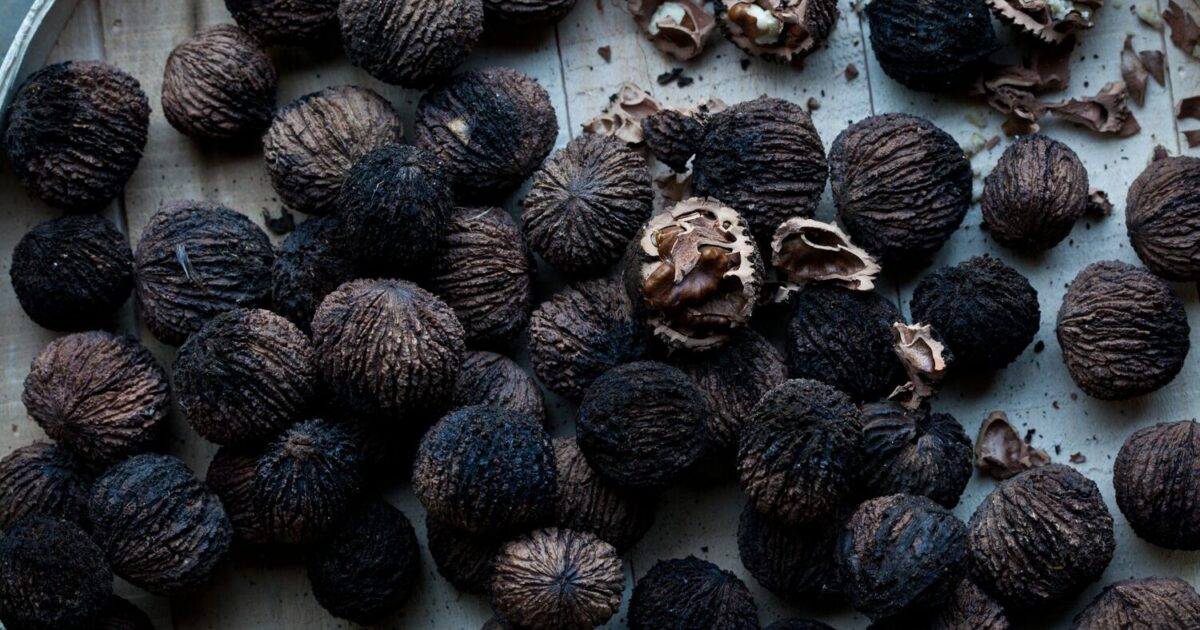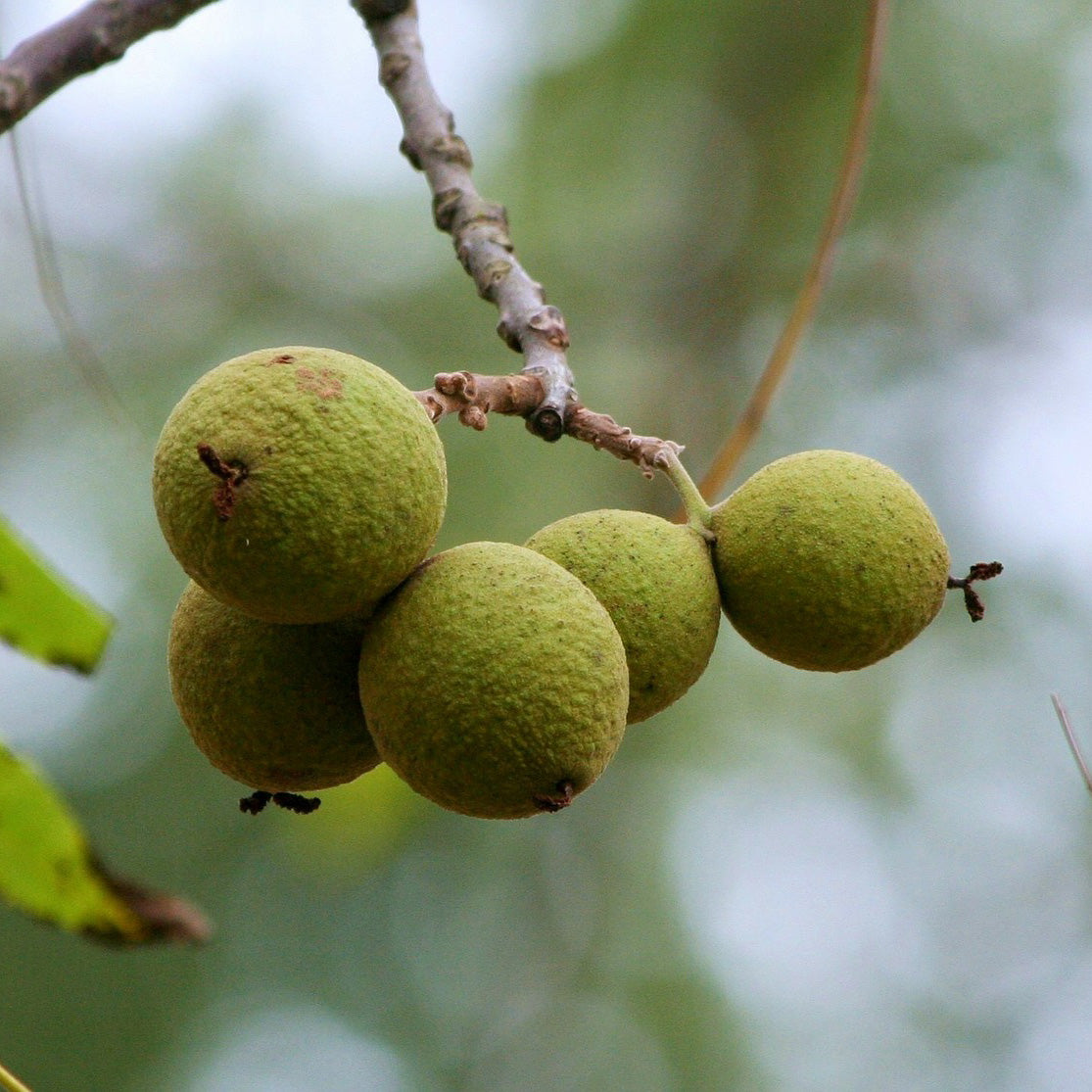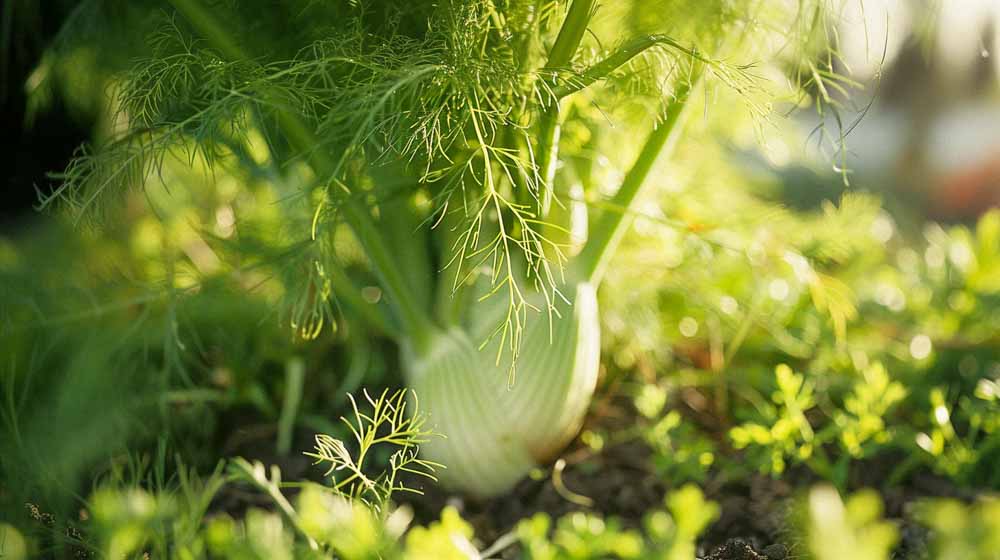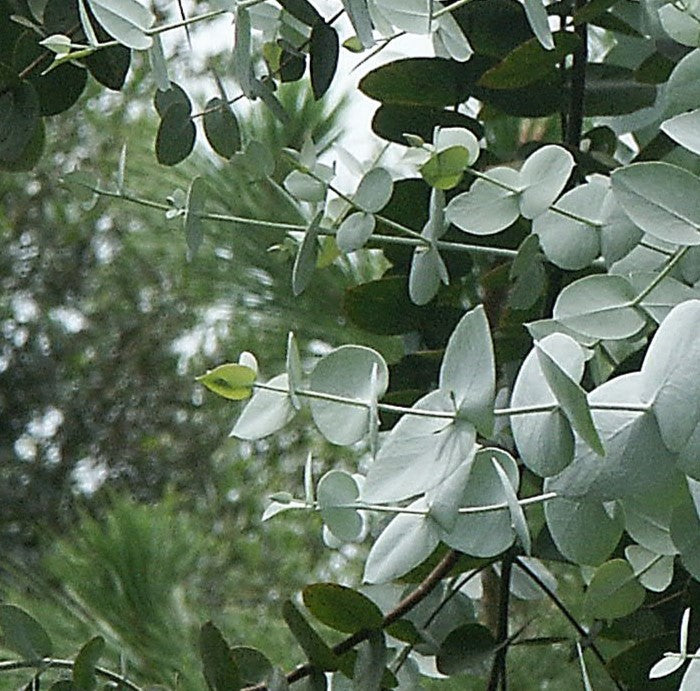Svart Valnøtt (Juglans nigra): En Omfattende Guide til Bruk, Fordeler og Dyrking
Velkommen til vår dypdegående utforskning av svart valnøtt (Juglans nigra), et bemerkelsesverdig tre med en rik historie og et bredt spekter av bruksområder. Fra sine næringsrike nøtter til verdifullt treverk og tradisjonelle medisinske anvendelser, fortjener svart valnøtt vår fulle oppmerksomhet. I denne omfattende guiden vil vi dykke ned i alle aspekter av dette fascinerende treet, og gi deg den mest detaljerte informasjonen som er tilgjengelig.
Opprinnelse og Utbredelse av Svart Valnøtt
Svart valnøtt er et løvfellende tre som er hjemmehørende i det østlige Nord-Amerika. Dets naturlige utbredelsesområde strekker seg fra det sørlige Ontario og Quebec i Canada, sørover til det nordlige Florida og vestover til det østlige Texas og Oklahoma. Gjennom århundrene har treet blitt introdusert til andre deler av verden, inkludert Europa og Asia, hvor det ofte dyrkes for sitt verdifulle treverk og sine spiselige nøtter. Svart valnøtt trives best i dyp, fruktbar og godt drenert jord, og foretrekker solrike forhold. Det finnes ofte i løvskoger, langs elvebredder og i åpne områder.
Botanisk Beskrivelse av Svart Valnøtt
Juglans nigra er et staselig tre som kan nå en høyde på opptil 30-40 meter, med en bred og spredende krone. Barken er mørkegrå til svart, og har dype furer som gir den et karakteristisk utseende. Bladene er store og sammensatte, typisk 30-60 cm lange, med 11-23 ovale til lansettformede småblader som har en sagtannet kant. Om høsten får bladene en vakker gul farge før de faller av. Svart valnøtt er en sambuplante, noe som betyr at den har separate hann- og hunnblomster på samme tre. Hannblomstene er lange, hengende rakler som produserer store mengder pollen, mens hunnblomstene er små og sitter i klaser på de nye skuddene. Frukten er en rund nøtt med et tykt, grønt skall som blir svart og hardt når den er moden. Selve valnøttkernen er rik på olje og har en karakteristisk smak.
Viktige Kjennetegn ved Svart Valnøtt:

- Høyde: Opptil 30-40 meter.
- Krone: Bred og spredende.
- Bark: Mørkegrå til svart med dype furer.
- Blader: Store, sammensatte med 11-23 småblader.
- Blomster: Separate hann- og hunnblomster (sambus).
- Frukt: Rund nøtt med tykt, grønt skall.

Økologisk Betydning av Svart Valnøtt
Svart valnøtt spiller en viktig rolle i økosystemene der den vokser. Treet gir ly og mat for en rekke dyrearter, inkludert ekorn, fugler og hjort. De falne bladene bidrar til jordforbedring når de brytes ned. Rotsystemet hjelper til med å stabilisere jorda og forhindre erosjon. I tillegg er svart valnøtt vertsplante for flere sommerfuglarter. Treet kan også ha en allelopatisk effekt, noe som betyr at det produserer kjemiske stoffer (juglon) som kan hemme veksten av visse andre planter i nærheten. Dette er en viktig faktor å vurdere ved planting av svart valnøtt i hager eller landbruksområder.
De Mange Bruksområdene for Svart Valnøtt
Svart valnøtt er en allsidig ressurs med en lang historie med menneskelig bruk. Fra de næringsrike nøttene til det ettertraktede treverket og de tradisjonelle medisinske anvendelsene, har dette treet mye å tilby.
Næringsrik Matkilde: Valnøttkjernen
Kjernen av svart valnøtt er en næringsrik matkilde som er rik på sunne fettstoffer, proteiner, vitaminer og mineraler. Den inneholder betydelige mengder enumettede og flerumettede fettsyrer, som er gunstige for hjertehelsen. Valnøtter er også en god kilde til vitamin E, folat, magnesium, fosfor og kalium. De har et høyt innhold av antioksidanter, som bidrar til å beskytte kroppen mot oksidativt stress og kroniske sykdommer. Svart valnøtter har en mer intens og jordaktig smak enn vanlige valnøtter (Juglans regia), noe som gjør dem populære i visse kulinariske applikasjoner, som i kaker, iskrem og salater. Det er viktig å merke seg at skallet på svart valnøtt er svært hardt og krever spesielt verktøy for å knekke.
Næringsinnhold i Svart Valnøtter (per 100 gram, omtrentlige verdier):
- Kalorier: 654 kcal
- Fett: 65 g (hovedsakelig enumettede og flerumettede)
- Protein: 15 g
- Karbohydrater: 14 g (hvorav fiber: 7 g)
- Vitamin E: 23 mg
- Folat: 98 µg
- Magnesium: 158 mg
- Fosfor: 346 mg
- Kalium: 441 mg


Verdifullt Treverk: Ettertraktet i Møbelindustrien
Svart valnøtt er høyt verdsatt for sitt harde, tunge og slitesterke treverk. Kjerneveden har en rik, mørk sjokoladebrun farge som ofte har vakre årer og mønstre. Dette gjør det til et ettertraktet materiale for produksjon av eksklusive møbler, finér, gulv, skap og geværkolber. Treverket er også relativt lett å bearbeide og polere, noe som bidrar til dets popularitet blant håndverkere og møbeldesignere. På grunn av den langsomme veksten til svart valnøtt og den høye etterspørselen, kan tømmer fra dette treet være ganske kostbart.
Egenskaper ved Svart Valnøtt Treverk:
- Hardhet: Høy
- Tetthet: Høy
- Slitestyrke: Utmerket
- Farge: Mørk sjokoladebrun med vakre årer
- Bearbeidbarhet: God
- Polering: God
Tradisjonell Medisinsk Bruk av Svart Valnøtt
Ulike deler av svart valnøtt har blitt brukt i tradisjonell medisin i århundrer. Spesielt det grønne skallet og bladene har vært brukt for sine påståtte helsefordeler. Ekstrakter fra svart valnøtt inneholder juglon, tanniner og andre bioaktive forbindelser som har vist seg å ha antimikrobielle, antioksidative og antiinflammatoriske egenskaper i laboratoriestudier. Tradisjonelt har svart valnøtt blitt brukt for å behandle en rekke plager, inkludert parasittinfeksjoner, hudproblemer, fordøyelsesbesvær og sår. Det er viktig å merke seg at mange av disse tradisjonelle bruksområdene ikke er fullstendig støttet av moderne vitenskapelig forskning, og at mer klinisk forskning er nødvendig for å bekrefte effektiviteten og sikkerheten ved bruk av svart valnøtt i medisinsk sammenheng. Rådfør deg alltid med en helsepersonell før du bruker svart valnøtt for medisinske formål.
Tradisjonelle Medisinske Anvendelser:
- Parasittinfeksjoner
- Hudproblemer (eksem, ringorm)
- Fordøyelsesbesvær
- Sår og betennelser
- Tannhelse (munnvann)

Andre Bruksområder for Svart Valnøtt
I tillegg til mat, treverk og tradisjonell medisin, har svart valnøtt også andre interessante bruksområder. Skallet fra nøttene kan brukes som et mildt slipemiddel i rengjøringsprodukter og i industrielle prosesser. Det kan også knuses og brukes som fyllstoff i plast og andre materialer. Saften fra det grønne skallet inneholder et naturlig fargestoff som har blitt brukt til å farge tekstiler og treverk i nyanser av brunt og svart. Barken og røttene har også blitt brukt til å produsere fargestoffer. I noen tilfeller plantes svart valnøtt som et prydtre i parker og store hager på grunn av sin vakre form og løvverk.
Diverse Bruksområder:
- Slipemiddel (fra nøtteskall)
- Fyllstoff i materialer (fra nøtteskall)
- Naturlig fargestoff (fra grønt skall, bark og røtter)
- Prydtre i landskapsarkitektur
Helsefordeler Knyttet til Svart Valnøtt
Selv om mer forskning er nødvendig, antyder noen studier og tradisjonell bruk at svart valnøtt kan ha visse helsefordeler. Disse fordelene tilskrives i stor grad de bioaktive forbindelsene som finnes i treet, spesielt juglon, tanniner og polyfenoler.
Antimikrobielle Egenskaper
Juglon, en naftokinonforbindelse som finnes i alle deler av svart valnøtt, har vist seg å ha antimikrobielle egenskaper i laboratoriestudier. Det har blitt funnet å være effektivt mot visse bakterier, sopp og parasitter. Tradisjonelt har svart valnøtt blitt brukt for å behandle innvollsorm og andre parasittinfeksjoner. Noen kommersielle kosttilskudd som inneholder svart valnøtt er markedsført for dette formålet, men det er viktig å konsultere en lege før bruk, spesielt ved mistanke om en parasittinfeksjon.
Antioksidativ Virkning
Svart valnøtt er rik på antioksidanter, som er forbindelser som bidrar til å beskytte kroppen mot skadelige frie radikaler. Frie radikaler er ustabile molekyler som kan forårsake oksidativt stress og bidra til utviklingen av kroniske sykdommer som hjertesykdom, kreft og Alzheimers sykdom. Polyfenolene som finnes i svart valnøtt, inkludert ellaginsyre og gallussyre, er potente antioksidanter som kan bidra til å nøytralisere disse skadelige molekylene.
Antiinflammatoriske Effekter
Noen studier har antydet at ekstrakter fra svart valnøtt kan ha antiinflammatoriske effekter. Betennelse er en naturlig respons på skade eller infeksjon, men kronisk betennelse kan bidra til en rekke helseproblemer. Forbindelser i svart valnøtt kan bidra til å redusere produksjonen av pro-inflammatoriske cytokiner, noe som kan ha en gunstig effekt ved inflammatoriske tilstander. Mer forskning på mennesker er nødvendig for å bekrefte disse effektene.
Potensielle Fordeler for Tannhelsen
Tradisjonelt har avkok av svart valnøtt blitt brukt som munnvann for å fremme god tannhelse. De antimikrobielle egenskapene til juglon kan bidra til å bekjempe bakterier i munnen som kan forårsake plakk, tannkjøttbetennelse og dårlig ånde. Noen kommersielle tannkremer og munnvann inneholder også ekstrakter fra svart valnøtt. Imidlertid er det viktig å merke seg at overdreven bruk kan føre til flekker på tennene.
Hudpleieapplikasjoner
På grunn av sine antimikrobielle og antiinflammatoriske egenskaper, har svart valnøtt også funnet anvendelse i hudpleieprodukter. Det kan brukes til å behandle visse hudinfeksjoner, eksem og andre inflammatoriske hudtilstander. Noen naturlige hudpleieprodukter inneholder ekstrakter fra svart valnøtt for sine rensende og beroligende effekter. Igjen, forsiktighet bør utvises, da noen individer kan være følsomme for forbindelser i svart valnøtt.
Andre Potensielle Helsefordeler
Ytterligere forskning antyder at svart valnøtt kan ha andre potensielle helsefordeler, inkludert:
- Støtte for fordøyelsessystemet: Tradisjonell bruk inkluderer lindring av forstoppelse og andre fordøyelsesproblemer.
- Blodsukkerregulering: Noen foreløpige studier antyder en mulig rolle i å stabilisere blodsukkernivået.
- Kreftforebygging: Antioksidantene i svart valnøtt kan bidra til å beskytte mot celleskader som kan føre til kreft, men mer forskning er nødvendig.
Det er viktig å understreke at mye av forskningen på helsefordelene ved svart valnøtt er foreløpig og har blitt utført i laboratoriemiljøer eller på dyr. Mer omfattende kliniske studier på mennesker er nødvendig for å bekrefte disse potensielle fordelene og fastslå sikre og effektive doseringer.
Dyrking av Svart Valnøtt
Å dyrke svart valnøtt kan være et langsiktig, men givende prosjekt. Treet er verdsatt for sine nøtter, sitt treverk og sin evne til å gi skygge. Her er en detaljert guide til dyrking av svart valn






